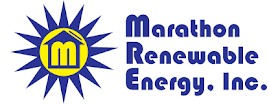Ground source heat pumps work the same way an air conditioner or refrigerator or freezer works. Coolant is compressed, making it hot. The heat is taken away to heat the house, and the coolant is decompressed making it cold. The cold fluid is heated by exchanging heat with ground water, or a closed loop in the ground. Then the process is repeated. This is simply reversing the function of an air conditioner.
Ground source heat pump advocate claim efficiencies of up to 600%. (And no this does not violate the laws of thermodynamics.) I am very skeptical of the highest numbers used, but let's use 400% a number I found on an indusry promotional website, and do some arithmetic.
Power plants are aproximately 33% efficient. This means that 33% of the potential energy in the coal makes it to the final step of the conversion process to electricity. About 10% of the power is lost in transmission, so the final number for plant and grid efficiency is around 30%.
If we assume 400% efficiency this leaves the final efficiency of the heat pump system at about 120%. This means that 120% of the potential heat in the coal winds up as heat in your home. If the coal were burned on site, you could expect efficiencies of around 60-80%. So the heat pump is a more efficient way to heat your house with coal. Coal is the dirtiest burning fuel we have in terms of carbon.
Natural gas at 90% efficiency puts less CO2 into the air than even a 400% efficient heat pump. Why? The gas is burned on site to produce heat. The gas also contains hydrogen which is combusted into water vapor, not CO2. The process is simple and direct. For the heat pump coal is burned to produce heat to convert water to steam to drive a turbine to turn a generator to produce electricity which is transmitted through a grid, stepped down, and used to turn a motor to drive a compressor to power the heat pump. Any time energy changes form there are significant losses. The final step of 400% efficiency simply overcomes previous losses putting the final number not that far removed from more conventional technologies. Also more energy is required to move the coal around than the natural gas.
The operational cost is less. This is because coal is cheap, not some great efficiency of the system. Installation cost are high, and depending on the design require extensive excavation. (Deisel backhoes).
Theoretically if the electricity were green, the process makes sense. Reality comes into play here. We get most of our electric power from coal. Could you power it with PV? YES! But this is not cost effective. PV is 15% efficient at best, so you could get up to 60% of the suns energy into the house using the heat pumps touted 400% efficiency. So what's the problem?
Thermal panels harvest well in excess of 50% of the sun's energy in the form of heat. Installed costs are less than 1/3 PV's so for the same amount of money you could install 3 times the collector area and still get three times the heat you would get from a PV powered heat pump, without the cost of the heat pump system.
What makes this an apples to walnuts comparison is the nature of the technology itself. Once installed the Solar Thermal system provides FREE heat which is carbon free. But the sun does not always shine, so for long cloudy periods solar thermal needs to be backed up by storage or conventional heating. The heat pump always works, relaibly heating your home with high efficiency coal heat day in and day out.
The best solutions to the problems presented by the need for heating are not to be found in the USA, but in Europe. The Germans have developed a standard called Passive Haus. The Passive Haus has a minimum of R60 on all sides of the building envelope, extremely low air infiltration, high efficiency windows and doors, and a heat recovery ventilator. These building need so little heat that a heating system is not required. Small amounts of heat do need to be added to the make up air to keep the building comfortable. This is easily supplied by 2 or 3 solar thermal panels most of the time. The backup can be conventional electrical resistance heating, because the electricity consumed is so small that a ground source heat pump would never pay for itself in savings.
For new construction, Passiv Haus is the way to go. We are currently working on an old house moving in the direction of Passive Haus to see if we can come close to this standard on a retrofit. Pair Passive Haus with Solar Thermal heat and you have the closest thing available today to a sustainable system.
My parting thought for the day is a trick question. Why can't you build an Energy Star (the government program for certifying energy efficiency) house in Europe?
Because Energy Star standards do not even come close to meeting the minimum energy standards in Europe.



